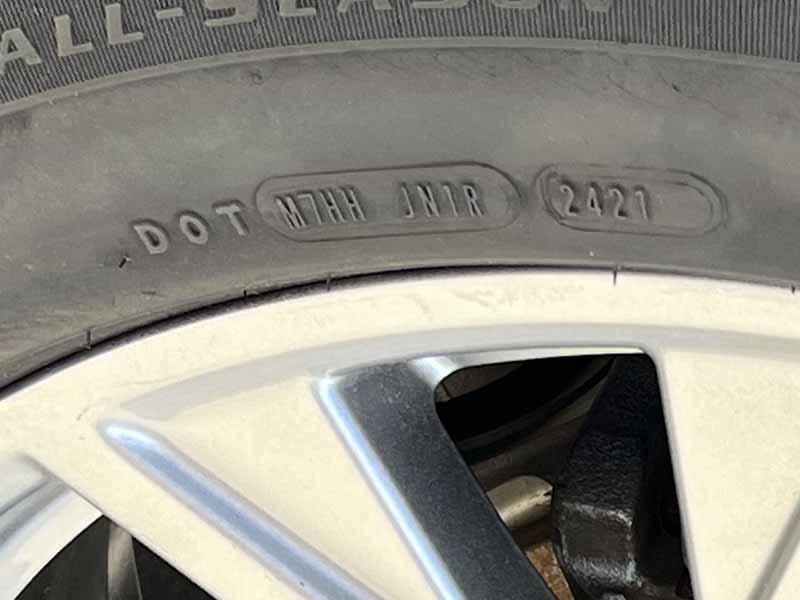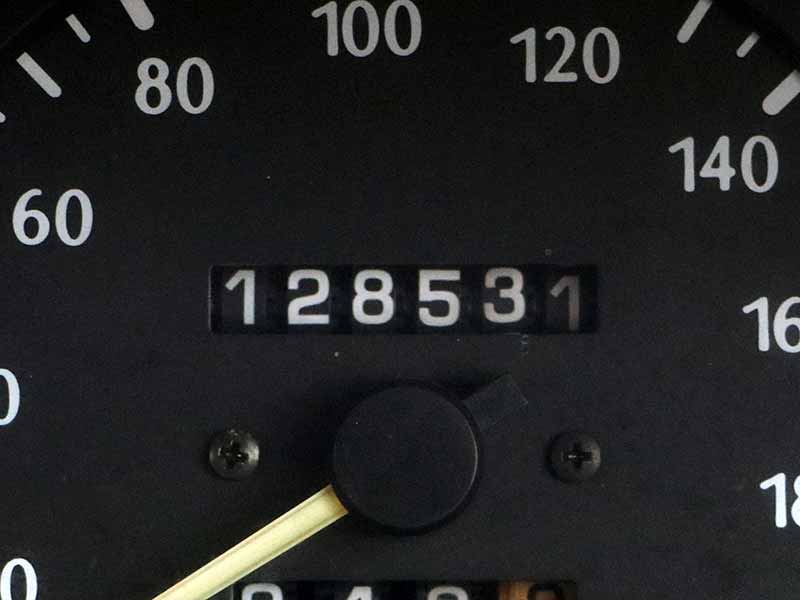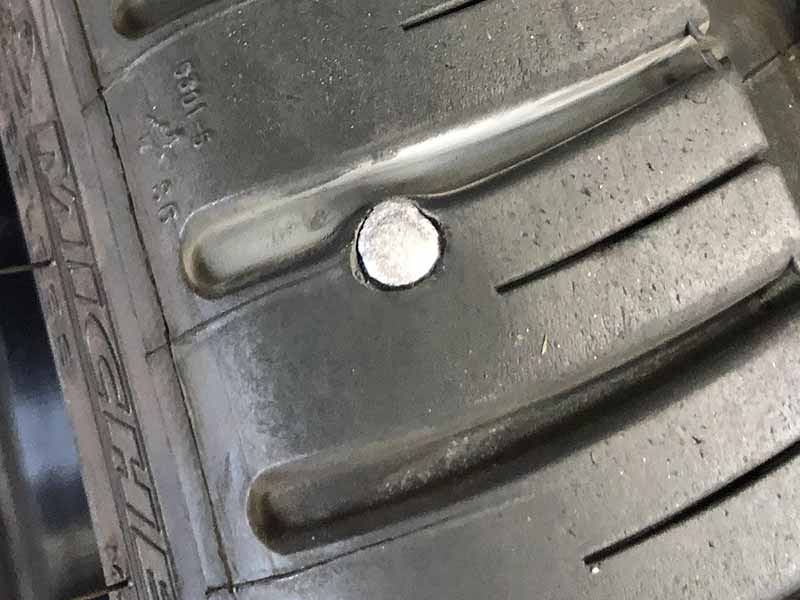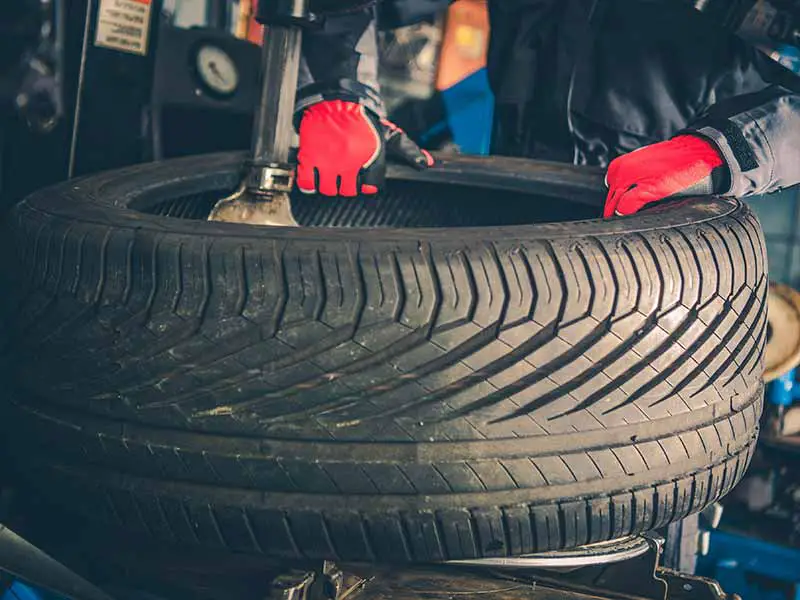We all want our tires to last as long as possible, but they eventually will need to be replaced. The main reasons to replace tires are tread wear, tire age, and visible damage. Mileage can vary too much for various reasons so there isn’t a good mileage to recommend most cars have new tires mounted.
When To Replace Tires
Tires must be replaced at 2/32″ tread left, but replacing your tires is recommended when they reach 4/32″ due to the significantly reduced stopping distances in rainy weather and increased risk of hydroplaning.
Tires should also be replaced if they are over 6 years of age and showing signs of dry rot or have significant visible damage.
Unfortunately, there isn’t one simple answer that will fit all scenarios for most drivers, but we will cover the majority of the important factors you should understand to determine when you need to purchase new tires.
Let’s take a closer look.
Remaining Tread Life Calculator
How To Know When To Replace Tires
Knowing when it’s time to be replacing tires on your car or truck isn’t too difficult. The most important factor to check is tread wear. A worn tire can’t provide maximum traction on wet roads and will lead to much longer stopping distances and an increased risk of hydroplaning.
Tire age is also important to be aware of if you don’t put as many miles on your car or truck as the average driver. Tires will begin to show signs of dry rot at 6 years of age.
Tire mileage is a poor way to determine if your tires need replacing, but can help you know when to pay more attention to the other factors in this guide.
Visible damage may force you into replacing tires before they have been able to provide all of their value, but if a damaged tire can be patched safely, it can continue providing you a safe driving experience.
Tread Depth To Replace Tires
Tread wear level is the best method for determining if your tires need to be replaced. The ability of your tires to maintain grip with the road surface in wet weather conditions depends upon the grooves in your tire tread pattern.
As your tire tread wears down it gradually loses its ability to channel water out from under and away from the contact patch beneath your tires. The difference between 10/32″ and 9/32″ is minor, but as your tire wears, its traction on wet roads drops quicker. The difference in performance between 4/32″ and 3/32″ is many times greater.
Should I Replace My Tires At 4/32″ Tread Depth
Most reputable tire shops and mechanics will recommend that you replace your tires at 4/32″ of tire tread wear. The reason for this is you’ve used most of the life of the tires and they still have a reasonable amount of wet weather traction.
Beyond this depth, stopping distances and hydroplaning risks increase dramatically and the amount of money you can save by continuing to drive on your worn tires doesn’t justify the reduced safety margin in rainy conditions.
Should I Replace My Tires At 3/32″ Tread Depth
It’s strongly recommended that you replace your tires at or before 3/32″. Stopping distances and hydroplaning risk are much higher than just 1/32″ more depth for water to escape from underneath your tires.
It is not legally required for you to replace your tires at this point. But it is very close and you will be required to do so very soon in most parts of the United States.
Should I Replace My Tires At 2/32″ Tread Depth
2/32″ tread wear is the minimum legal tread wear level across the majority of the country. At this extremely small amount of tread groove, it takes a very small amount of water to overwhelm the tire’s ability to channel water out from under the tire.
There is little difference between a bald tire and one that has 2/32″ of tread left. If your tires are worn to this point you should replace your tires immediately.
How To Check Tread Wear
Tread wear is accurately checked with a tread depth gauge, but most vehicle owners don’t keep one of these inexpensive tools handy.
Most tires include wear bars which provide a visual indication built into the tire of whether your tires need to be replaced. These tread wear indicators are raised bars at the bottom of the tread grooves at several points around the circumference of the tire.
The wear bars are 2/32″ in height which means that once your tires have worn to the point that the top of the tread blocks are flush with the tread wear indicators you know you’ve reached the legal minimum and tire replacement needs to be done as soon as possible.
Penny Test
A convenient method to check the depth of your tire’s tread is with a penny. To perform the penny test, simply place a penny with Lincoln’s head upside down into one of the main tread grooves.
If Lincoln’s head is completely visible you should replace your tires immediately. If the top of the tread blocks between Lincoln’s forehead and the top of his head, you should have your tires replaced very soon.
If the area between the top of Lincoln’s head and forehead is completely hidden, you still have enough tread wear left and your tires don’t need to be replaced yet.
Age To Replace Tires
Most tires should be replaced once they have reached 6 years of age or more. You can find the date of manufacture of your specific tires on the sidewall from the DOT code.
Tires unfortunately don’t last forever whether they’re being used regularly, just sitting around, either mounted on a car or truck that’s never driven, or stored in a garage.
The rubber used to make tires will lose its elasticity and flexibility over time due to ultraviolet radiation from the sun and ozone in the atmosphere. This is called dry rot and begins appearing on the sidewalls of your tires as fine cracks that will continue to grow over time.
You can help slow dry rot by keeping your car or truck garaged or by storing your tires in air-tight bags at a constant temperature above 40º F.
Spare tires should also be considered. If your vehicle has a spare tire and is over six years old, you should purchase a spare tire replacement so that you’re prepared in case you need it. I can tell you from personal experience that it is quite frustrating to try to mount a spare tire only to find out that it won’t hold any air pressure anymore.

Mileage To Replace Tires
Generally speaking, tires will last 50,000 to 60,000 miles for most passenger cars and light trucks. The amount of mileage you will achieve personally with your specific tires will vary based on many factors such as driving style, vehicle type, proper tire maintenance, etc.
Mileage is a poor indicator of when to replace your tires, but you should be aware of the mileage guarantee that many tire manufacturers include with the tire warranty that automatically comes with most tires.
The mileage guarantee doesn’t mean that your tires will actually last that long. But what it does mean is that if they don’t make it all the way to the guaranteed mileage, your tire manufacturer will compensate you for the difference.
It is possible to put more miles on your tires than the guaranteed mileage. Replacing tires isn’t necessary unless tread wear is too low, there has been some type of damage that has occurred to the tire, or it is beyond six years of age and is showing signs of dry rot.

Damaged Tire
If you have damage to a tire it should be fairly obvious that it needs to be replaced. Cosmetic scuffs can typically be ignored, but deeper cuts, gashes, gouges, and most other visible damage should be inspected by a tire professional.
Punctures can often be patched unless they are close to the shoulder of the tire or in the sidewall. In these situations, the tire can’t be safely patched due to the flexing and stresses put on the tires in those areas.
Curb strikes, potholes, and road debris may not cause a puncture, but it can damage the inner structure of your tire. Broken belts or cords can cause bulges or deformations that cause the tire to be unable to hold its shape properly.
Improper inflation can also cause damage to the sidewalls or tread surface. Overinflation will cause your tires to wear unevenly in the middle of the tread. Underinflation will accelerate wear on the shoulders of your tires as well as create significant heat stress on the sidewalls in more extreme low tire pressure situations.
Wheel misalignment can also cause uneven wear patterns that will shorten the life of your tires. Alignment problems can be a result of curb strikes and potholes, or they can be due to worn suspension components or other suspension problems.

How To Make Tires Last Longer
Tires often don’t last as long as they could or should due to lack of proper care. Basic tire maintenance should be well understood by everyone, not just to save you money, but for your safety and the safety of others on the road.
New tires are expensive and even new tires can perform poorly if not cared for properly. Here are the best suggestions for ensuring your tires last as long as possible.
Driving Habits
An aggressive driving style can obviously accelerate wear on your tires. Your tire’s tread can only take so much abuse from jackrabbit starts, excessive hard cornering, and hard braking.
Your tires provide traction in all of these situations and wear much more quickly under these extreme stresses.
Simply dialing back the aggressive driving style a notch or two can make a big difference in how long your vehicle’s tires last and save you quite a bit in tire replacement cost over time.
Tire Rotation
Regular tire rotations can make a big difference in the life of your tires. Each tire will wear differently at each corner of your car or truck. Rotating your tires regularly will help distribute these different wear patterns over the whole tire.
Regular tire rotation is also important for maintaining your tire manufacturer’s warranty. Most tire warranties require that you rotate your tires at 5,000-mile intervals or slightly more. Being able to provide proof that you’ve held up your obligation will allow you to have your warranty claim honored.
Air Pressure
Tire pressure is a critical aspect of proper tire care. Tire pressure monitoring systems do a great job of letting people know when there is a significant drop in air pressure, but they’re not the best for informing you of smaller air pressure fluctuations that need to be addressed.
Checking your tire at the correct air pressure regularly will ensure that they are able to provide the best traction and wear evenly.
Proper air pressures for your tires can be found on the tire information sticker in your driver’s door jamb or vehicle’s owner’s manual.
Tire Balancing
Tire balancing usually gets performed when you purchase new tires, but it can get overlooked over the life of your tires. As tires wear they can fall out of balance. This can be due to the wear itself, bent wheels, or lost wheel weights.
Having your tires rebalanced every 10,000 miles is recommended to ensure even wear and a smooth ride. An out-of-balance tire can bounce subtly as it spins which can lead to uneven wear and steering wheel vibrations.
Wheel Alignment
Wheel alignment is the cause of many uneven tire wear patterns. Front tires tend to suffer more from alignment problems due to curb strikes but rear tires can also fall out of alignment from potholes and other hard hits that can cause suspension damage over time.
Having a wheel alignment performed every 10,000 miles is suggested not only to ensure your the wheels on your front and rear axle are aligned properly, but to get eyes on your suspension components to inspect for wear and tear.
Worn bushings and other suspension connection points can lead to alignment problems. This will not only cause premature tire wear, but it can reduce a tire’s ability to grip the road properly.
Resources
Below are some links you may find helpful when learning about tires
- The truth about tire treadwear – Consumer Reports
- Causes and types of tire damage – Continental Tire
Final Thoughts
Understanding the penny test and how old tires with extremely low tread remaining deal with standing water and rainy weather is critical to understanding when your tires need to be swapped for new tires. Tire age and signs of damage can also mean it’s time to buy a set of new tires.
Understanding proper tire care is important to not just get the most out of your tires but for safe driving in general. Proper inflation, rotation, and regular tread inspection should be at the top of everyone’s list.
Good luck and happy motoring.






